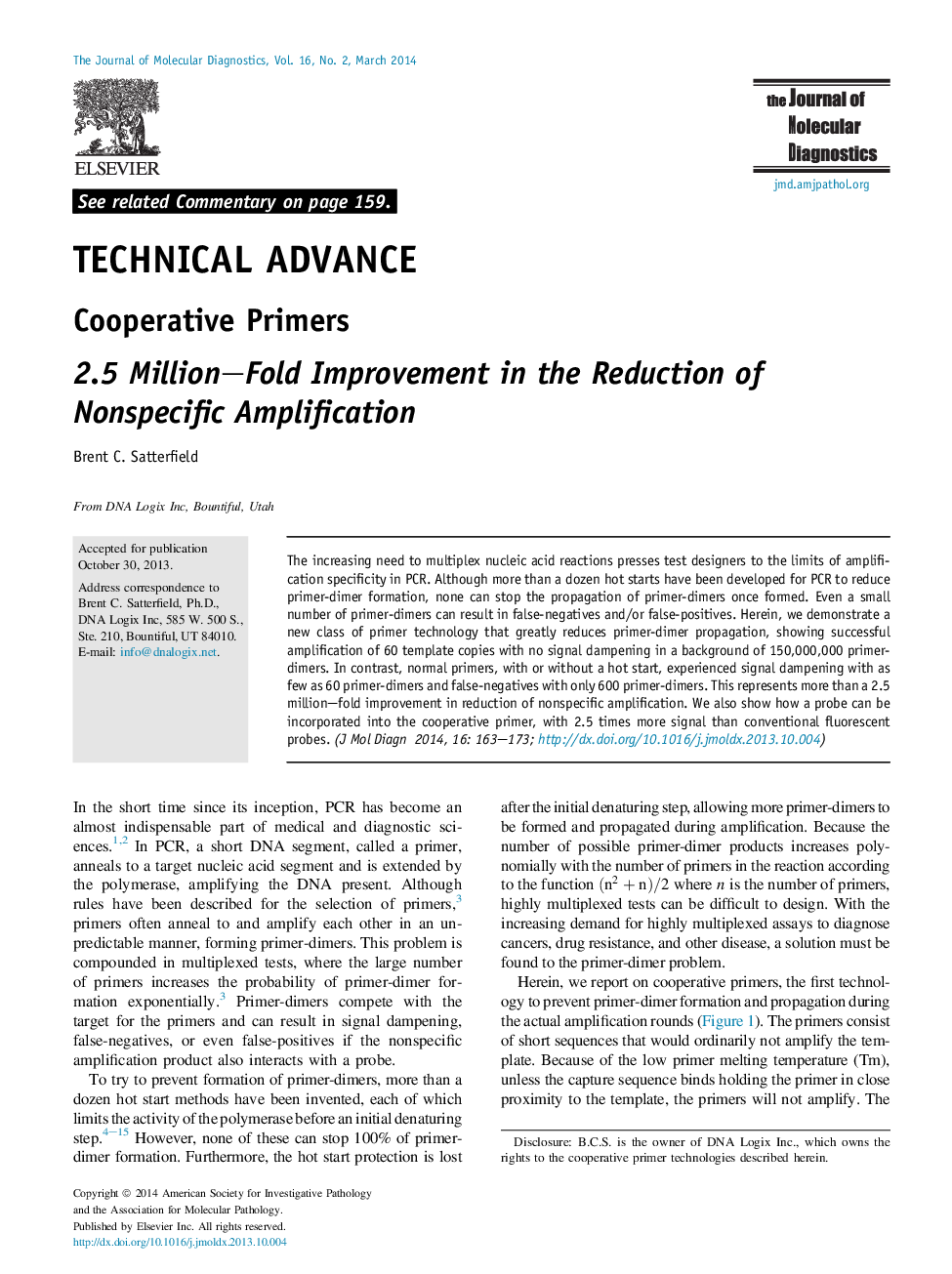| Article ID | Journal | Published Year | Pages | File Type |
|---|---|---|---|---|
| 6112509 | The Journal of Molecular Diagnostics | 2014 | 11 Pages |
The increasing need to multiplex nucleic acid reactions presses test designers to the limits of amplification specificity in PCR. Although more than a dozen hot starts have been developed for PCR to reduce primer-dimer formation, none can stop the propagation of primer-dimers once formed. Even a small number of primer-dimers can result in false-negatives and/or false-positives. Herein, we demonstrate a new class of primer technology that greatly reduces primer-dimer propagation, showing successful amplification of 60 template copies with no signal dampening in a background of 150,000,000 primer-dimers. In contrast, normal primers, with or without a hot start, experienced signal dampening with as few as 60 primer-dimers and false-negatives with only 600 primer-dimers. This represents more than a 2.5 million-fold improvement in reduction of nonspecific amplification. We also show how a probe can be incorporated into the cooperative primer, with 2.5 times more signal than conventional fluorescent probes.
